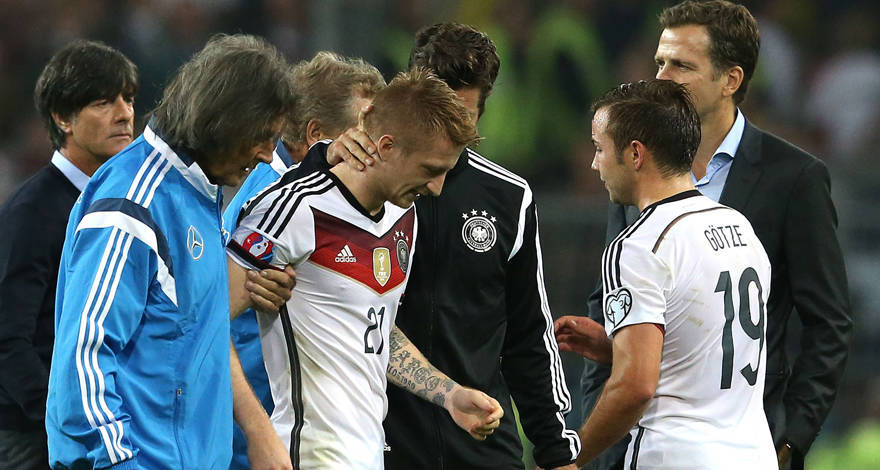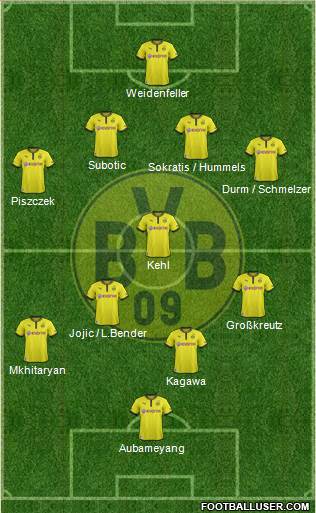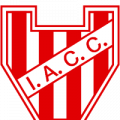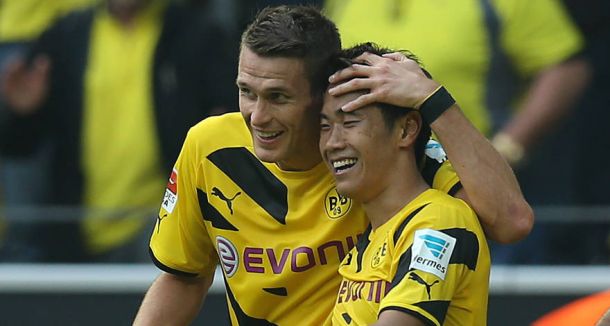Borussia Dortmund are in a period of transition, with Jürgen Klopp trying to remodel his side after experiencing big blows during transfer windows. The squad that won twice the German Bundesliga was left short of their best player – Shinji Kagawa – at the end of the 2011-12 campaign but Borussia Dortmund managed the same to play the Champions League final the following year. Since then, Klopp lost two more key players as Mario Götze (summer 2013) and Robert Lewandowski (summer 2014) joined the arch-rivals Bayern Munich.
However, despite this kind of losses, BVB’s coach has always found a way to field a competitive side, especially in Europe. Last season they were close to a stunning comeback against Real Madrid in the quarter-finals; after losing 3-0 at Santiago Bernabeu, Klopp’s side won 2-0 at Iduna Park giving Carlo Ancelotti the shivers. Eventually Real Madrid won the Champions League, but it’s in Europe that Borussia showed how unforeseeable they are.
Transfer Market: New and old faces
As said, losing Lewandowski meant that Klopp had to change the attacking line. Ciro Immobile and Adrian Ramos were the main addictions up front. Immobile scored 22 goals with Torino in the Italian Serie A last season while the Colombian is already accustomed to the German league, having netted 58 times in five years with Herta Berlin. The new arrivals will be used with or instead of Pierre Aubameyang, the main spearhead in Klopp’s plan.
Among the new faces there is Matthias Ginter, a versatile 21-year-old central defender. Already World Cup winner with Germany last July, Ginter could play also as defensive midfielder and his arrival would bolster a department, the defence, that last season were too short of alternatives due to several injuries.
However, the big news is the return of Kagawa. The Japanese creative midfielder was sold to Manchester United two seasons ago but despite a good start he didn’t seem comfortable in a Red Devils’ shirt. After disappointing and rather drab performances, the end of his time in England was bound to come when Louis Van Gaal arrived in Manchester and eventually Kagawa returned to the club which bought him from Cerezo Osaka.
Current season
Borussia started successfully this campaign winning the German Super Cup against Bayern Munich in mid-August but they lost at home in the opening game of Bundesliga against Bayer Leverkusen. Dortmund picked up their first points with a 3-2 win away to Augsburg before beating Freiburg 3-1 at home.
With six points BVB are back on track in the domestic tournament, sitting just one point behind the two current leaders, Bayern Munich and Bayer Leverkusen. However, Klopp’s concerns are about Marco Reus, who picked up a serious ankle injury during last weekend’s Germany-Scotland game and is expected to be sidelined for a month. Reus is undoubtedly the best player in the squad and the main link between attack and midfield. Kagawa and Henrick Mkhitaryan could fill the void but obviously Borussia won't be the same without Reus.

Tactics
There have been slight changes in the line-up and Klopp now seems prefer on fielding a 4-1-4-1 rather than a 4-3-1-2 seen in their first games of the season. It has meant that only one striker has been recently used and Ramos was called to play against Freiburg, leaving Aubameyang as likely first choice when BVB will face Arsenal in Champions League.
With Roman Weidenfeller as goalkeeper, Lukask Piszczek and Eric Durm are the owner respectively of the right-back and left-back berths, though the latter could face the competition from Marcel Schmelzer. The current central pair is formed by Sokratis Papastathoupoulos and Neven Subotic, given that Mats Hummels is still injured. However, the German centre-half is recovering and it wouldn’t be a surprise if he starts against Arsenal.
The holding midfielder, 34-year-old Sebastian Kehl, offers plenty of experience and a little further forward there are Kevin Großkreutz, Milo Jojic, Mkhitaryan and Kagawa. While Großkreutz is an tireless and dutiful operator, the others provide creativity, especially now that Reus is out. BVB’s main threats will be when they press high and turn defence into attack quickly, exploiting spaces left by opposition. Arsenal must be extremely careful in this situations because Borussia’s strength corresponds also to Gunners’ main weakness.
Klopp’s 4-1-4-1 could easily become a 4-5-1 defensively or 4-3-3 during the game, and next Tuesday Sven Bender could have a role in the starting XI – probably instead of Jojic - in order to pack the midfield and stifle the Gunners' fluidity. Only if Klopp has in mind an ultra-offensive line-up, Immobile would play centre-forward and as result, Aubameyang and Mkhitaryan may be deployed in the wings and Kagawa in the middle of the attacking midfielder trio. It could be an attractive “Plan B” but it’s probable that the coach would favourite a more compact formation.










































